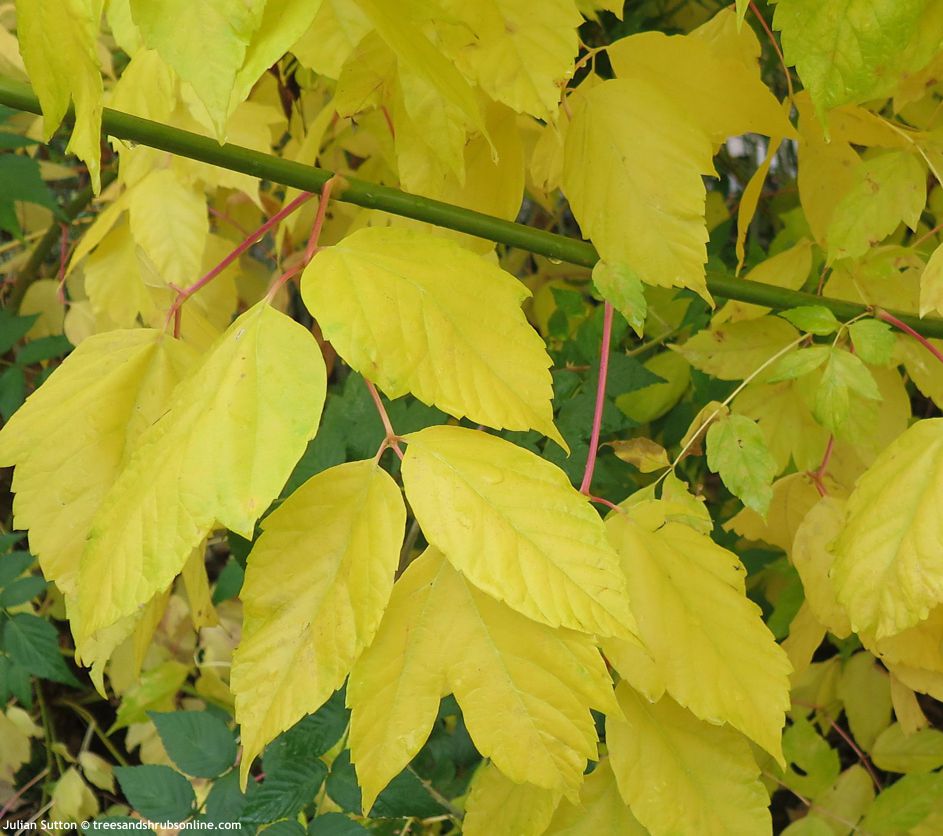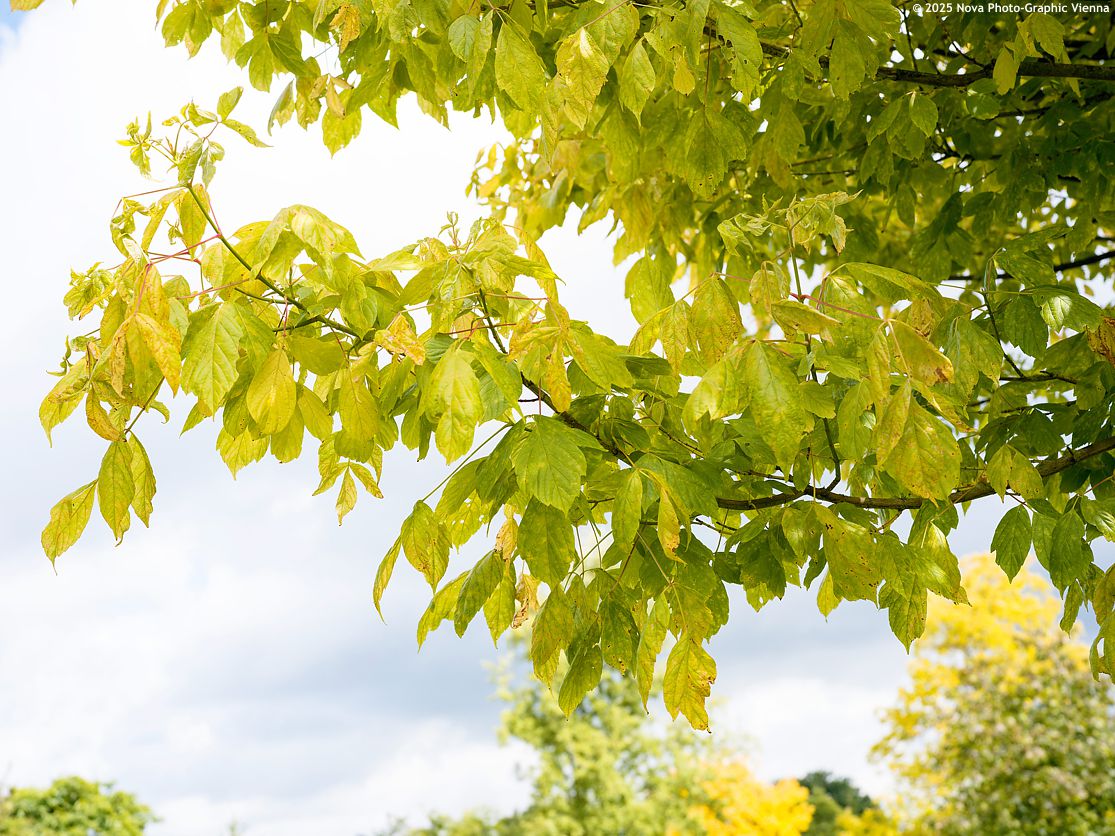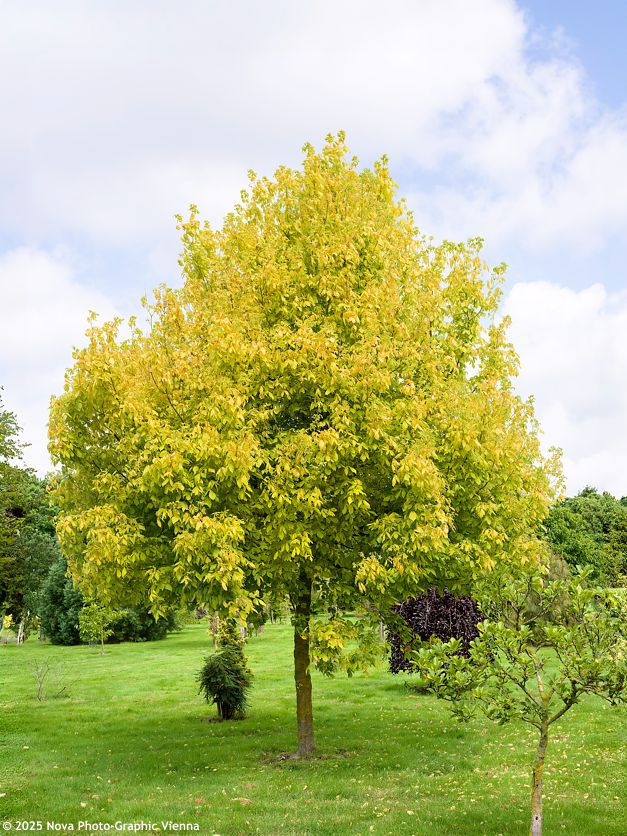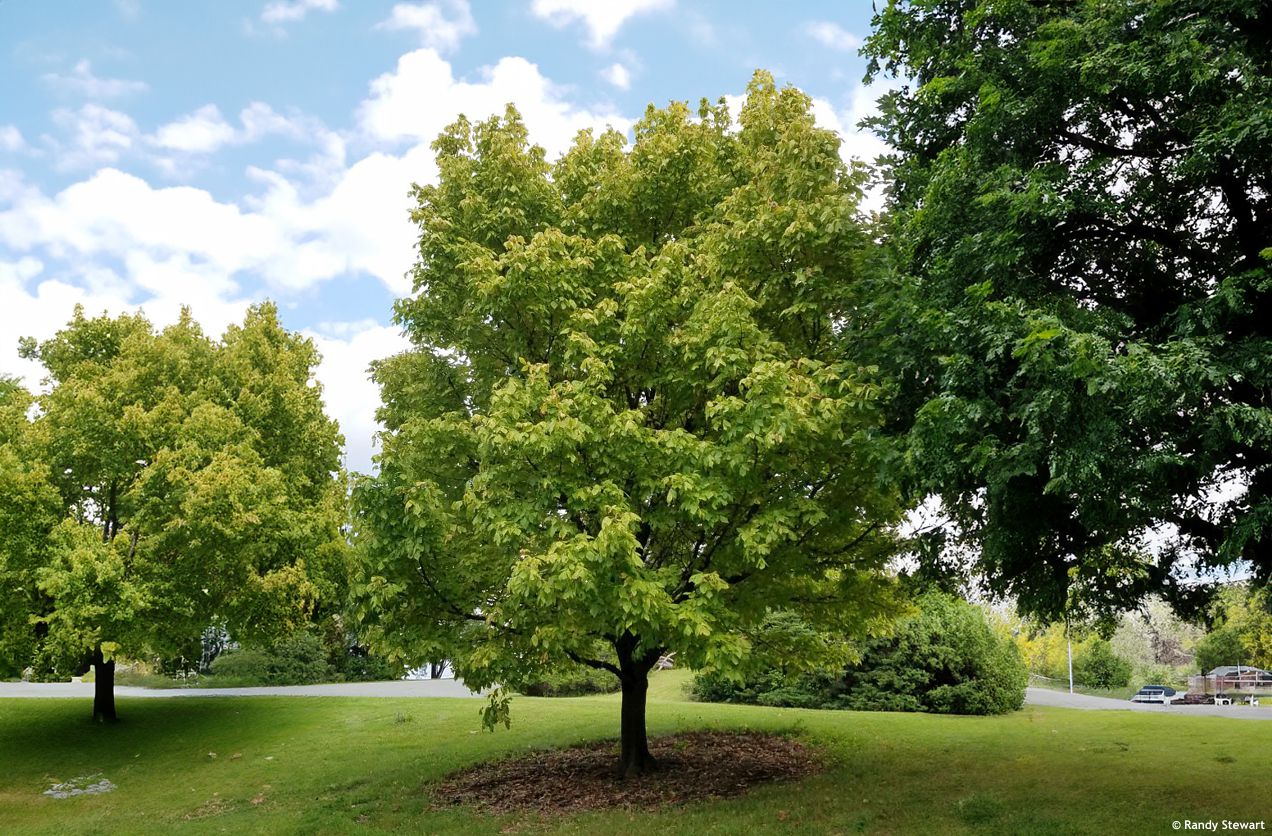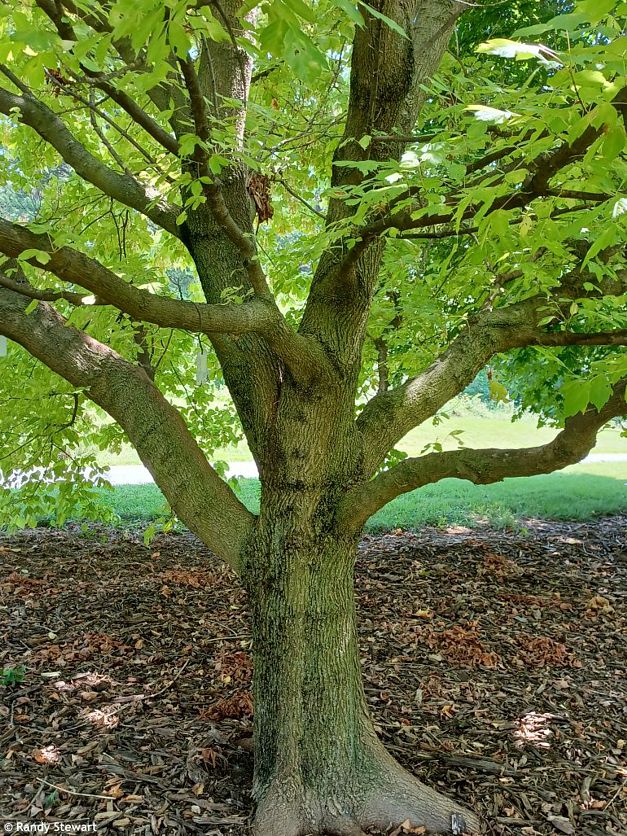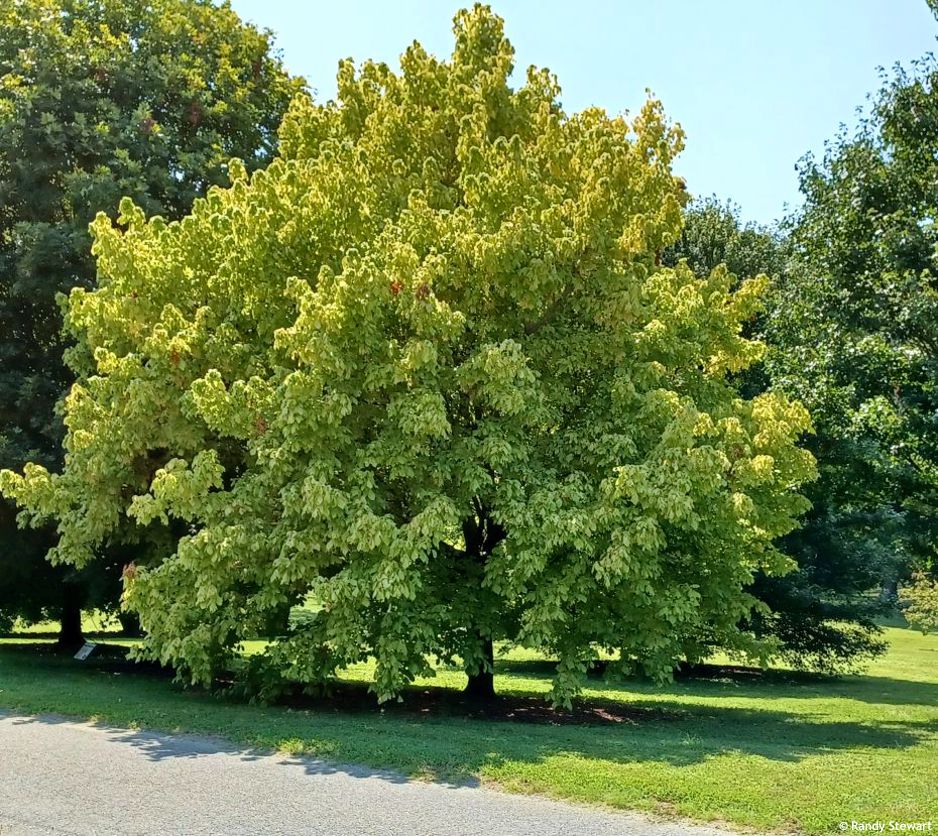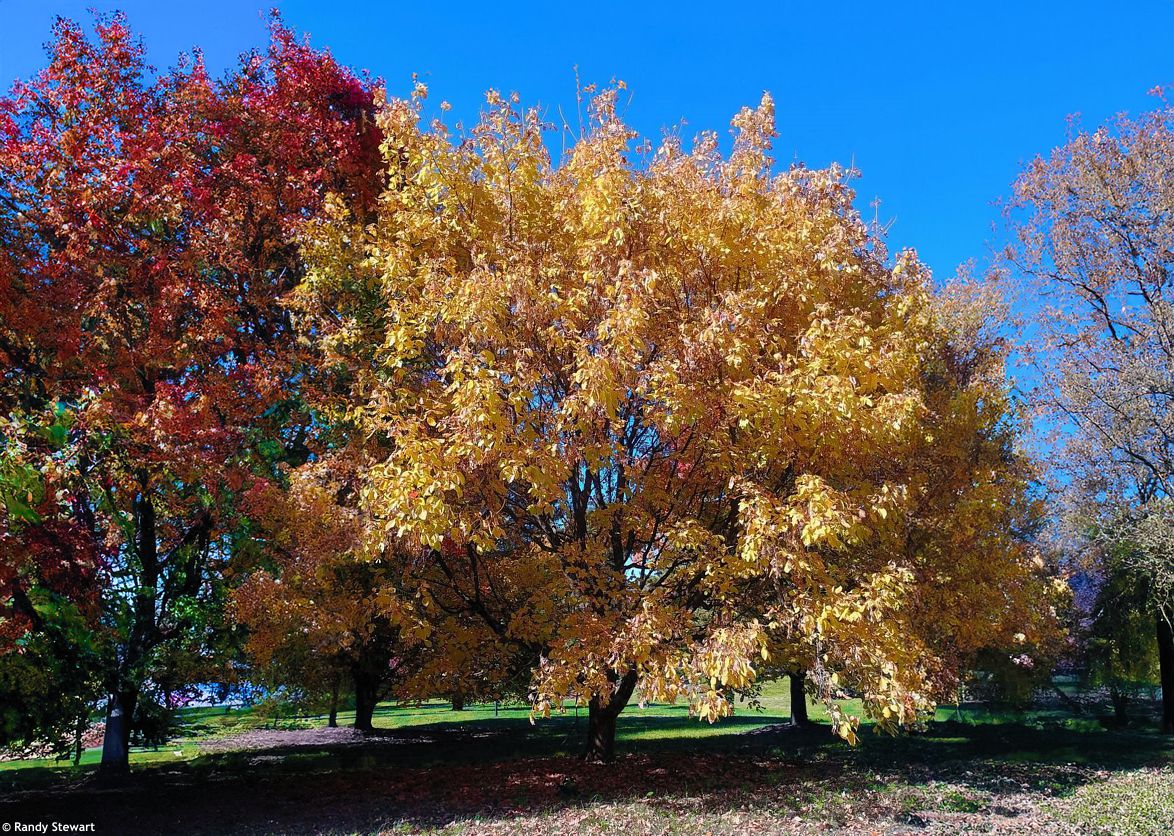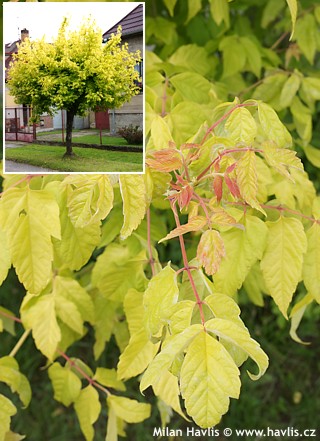Acer negundo 'WINTER LIGHNING'
Acer
The genus Acer belongs among the oldest documented deciduous trees of the Northern Hemisphere. Fossil finds of leaves and fruits prove that maples were already growing in the Tertiary period: from Czech sites in Bílina, for example, we know fossilized fruits and leaves of Acer tricuspidatum from the late Miocene, more than 15 million years old. Similar imprints have been found in North America and Asia, showing that the genus already had a wide distribution at that time. The genus was scientifically described by Carl Linnaeus in 1753, but its species classification has since been revised many times, as Asia, especially China, Japan, and the Himalayas, turned out to be its true center of diversity. Today, maples adapt to an astonishing range of conditions, from mountain valleys in the subtropics to the cold regions of the north.
Maple leaves have also become cultural symbols at opposite ends of the world: in Canada, since 1965, they have adorned the national flag and represent national identity; in Japan, the tradition of momijigari – the “hunt for red leaves” – dates back to the Heian period and still draws crowds of admirers to gardens and mountains. In Czech or Central European forests we do not find any native maple that turns a brilliant crimson red in autumn like the North American red maple (Acer rubrum) or the Japanese maple (Acer palmatum). Instead, our native maple Acer platanoides offers a range of vibrant shades, and other shrubs and trees (viburnum, euonymus, and wild plums and cherries) provide additional red tones, from crimson through purple to wine-red, so the Czech landscape is by no means deprived of autumn colour.
Winter Lightning is a cultivar of box elder, valued above all for its striking yellow twigs in winter, which stand out against the gray trunks and bare branches of other dormant trees. It is a medium-sized, deciduous tree with pinnate leaves that emerge in spring a fresh yellow, soon after shifting to chartreuse, and in summer they turn green. In autumn they take on glowing tones of golden and amber orange. The leaves are usually composed of five leaflets with pink stalks, ovate to lanceolate, 5–10 cm long, with irregular serrations along the margins or just a few notches, occasionally even entire – yes, a bit of a rascal. Their texture is light and relaxed, which is in fact one of the main reasons for the popularity of the box elder as a species. The species itself is native to North America, where it grows along rivers and in lowlands from Canada to Mexico. It was introduced to Europe as early as the 17th century and is now known as a fast-growing, adaptable tree, often planted in parks and urban greenery. The species produces abundant viable seeds, often spreading where it is not wanted – I did mention it’s a rascal – but modern cultivars are trouble-free or sterile.
The cultivar ‘Winter Lightning’ is most likely a selection taken from the species after a colour mutation, but no precise record of its origin or registration exists. It is assumed to have come from American nurseries, which in the second half of the 20th century introduced a number of new maples, including the famous Princeton Nurseries in New Jersey. It first appeared in American nursery catalogues in the late 1980s, from where it spread to Europe in the 1990s and soon received the Award of Garden Merit from the Royal Horticultural Society (RHS). And that is crucial, because this award could ONLY have been given if it were a sterile male clone that poses no invasive risk, so this one is not such a rascal after all.
Winter Lightning usually grows to a height of 6–8 meters, with a canopy spread of 4–6 meters in a somewhat irregular globose or dome shape. Thanks to these proportions it is well suited to medium-sized gardens, where it has enough space to show off its winter effect. It looks best as a specimen tree or in a small group, always with sufficient spacing. It stands out especially against dark backgrounds such as an evergreen hedge or darker conifers, where its yellow branches literally shine in winter. Older trees develop strong trunks with attractive texture. It also works well in contrast with trees that display red tones in summer or autumn and have a different habit, creating both colour and structural harmony. Thanks to its medium size and undemanding nature, it is also suitable for urban gardens, where it brings light and color.
Box elder requires virtually no care. It is resistant to severe frost, wind, drought, and even temporary waterlogging. It is not prone to diseases and thrives on neglect. It loves full sun as well as partial shade and prefers deep, moist but well-drained soils, yet it tolerates dry spells and urban pollution. In the first three years after planting, the tree must be staked to a strong support to ensure proper anchoring and straight trunk growth. During this period, do not allow grass or other plants to grow above its roots. Its frost hardiness is excellent – it withstands temperatures down to about –45 °C (USDA zone 2).
Last update 05-10-2025

4 648 Kč

4 768 Kč

4 776 Kč
Goods are shipped all over Europe. For Russia and U.K. and for further details please read about SHIPPING OPTIONS HERE.
Are you interested in a serious discount for orders NOV-FEB? Check your options here.
THE PRICES INCLUDE VAT of 15%. For quick conversion you can use 1 CZK = approx. 0.04 EUR
- STANDARD QUALITY - Plants of this group are 1st class quality with number of branches and overall density adequate to their size and age, considering they were container grown.
- DE LUXE QUALITY - This label guarantees a luxurious quality of manually selected plants that, compared to their height and age, are exceptionally dense and beautiful.
- EXTRA - These plants are usually mature and bigger specimens with exceptional overall appearance.
- STANDARD (as described in the plant form) means a tree with a trunk of 190-210 cm and a crown at the top, unless specified differently. The commercial size for trees is their girth measured in the height of 1m from ground.
- HOBBY - These plants are of the same quality as our standard-quality plants but younger and therefore cheaper.
- SHRUB - a woody plant with branches growing bushy from the ground level.
- HALF-STANDARD or MINI-STANDARD - a small tree with shorter trunk, its size is usually specified.
- FEATHERED - These are trees with branches growing already from the base of the trunk and up along the stem.
- GRASSES and PERENNIALS - Sizes given usually read the diameter of the pot or the clump, as specified.






























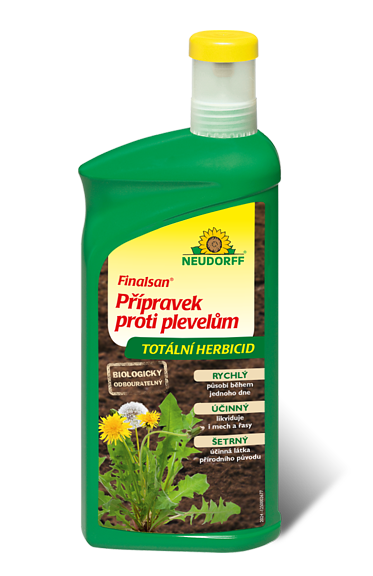


.jpg)
